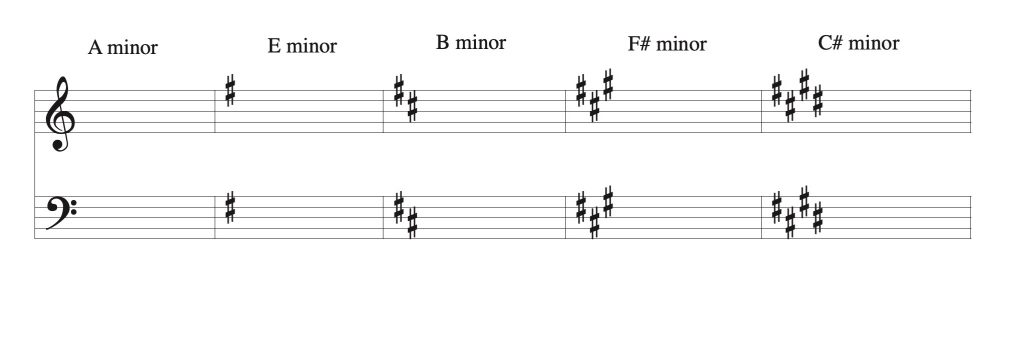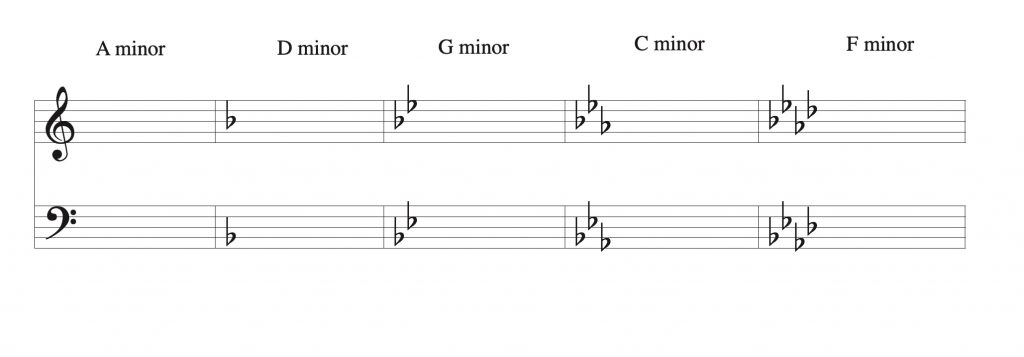12 Minor Key Signatures
Similar to major key signatures, minor key signatures tell us which notes need to be sharp or flat when music is written in a minor key. Minor key signatures ALWAYS follow the sharps or flats needed to create the natural minor scale, never the harmonic minor.


You may notice that these key signatures are familiar; for example, E minor is identical to G major. This is because all minor key signatures have what is called a relative major, and every major key signature has a relative minor. You can find the relative MINOR key signature by finding the sixth note of a MAJOR scale. You can also find the relative MAJOR key signature by counting up to the third note of any MINOR scale.

